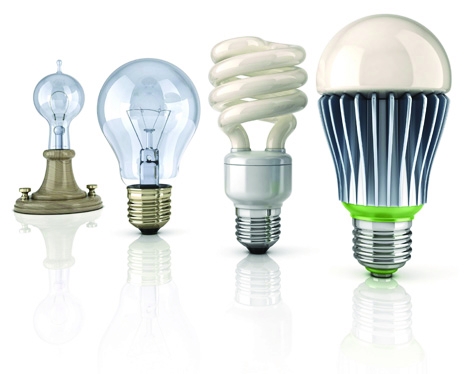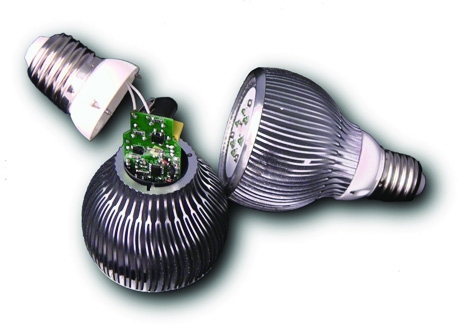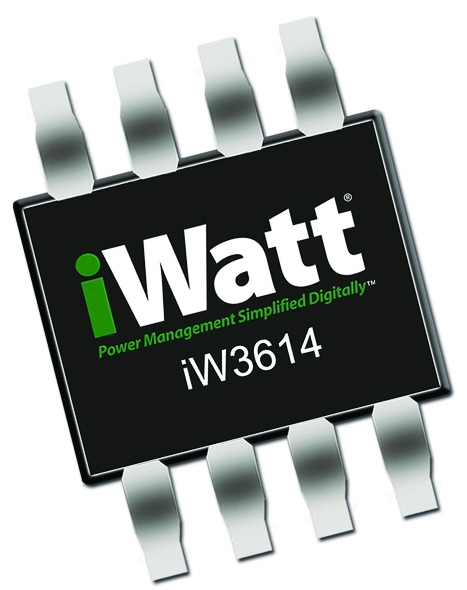It’s one of the great ironies of the technology world that the incandescent bulb - a universal symbol of the ‘Eureka moment’ - is itself heading for obsolescence. But with a number of more efficient lighting options gaining an ever-increasing market share, it’s probably only a matter of time before a technology that’s been with us for more than a century flickers its last.
The lion’s share of this new lighting market is expected to be dominated by light-emitting diodes (LEDs), which, according to estimates, will account for around 60 per cent of the global lighting market by 2020.

However, according to an increasingly vocal group of engineers, the rise of the LED could be held in check if engineers fail to deal with a flickering issue that arises when LEDs are combined with dimmer switches.
The issue first came to prominence when the authors of a 2010 IEEE paper combined a random wall dimmer with a random LED and found that they interacted to produce a repetitive flicker at 3.15Hz - which is within the frequency band of concern for photosensitive epilepsy.
Scott Brown, senior vice-president of marketing with Silicon Valley power conversion specialist iWatt, believes that the industry could ‘crash and burn’ if this issue isn’t rapidly addressed.
Essentially, a dimmer takes our incoming AC signal and hacks out a portion of each phase
Scott Brown, iWatt
Here in the UK where dimmer switches are less widespread, it’s perhaps less of a problem; but elsewhere in the world - particularly in the US - dimmers are ubiquitous, and Brown is concerned.
‘We consider it to be a really serious issue,’ he said. ‘If you were to kit out your kitchen with fancy LED lighting and your kid has an epileptic fit on a weekly basis, that’s clearly totally unacceptable. That’s going to make the news and put people off making the investment in LED lightbulbs.’
iWatt has a solution to this problem in the form of its ‘prime accurate’ digital control technology, which already has a 90 per cent share in the power brick market for tablet computers and around 40 per cent of the smartphone market.
‘It’s surprisingly difficult to work with a wall dimmer,’ explained Brown. ‘Essentially, a dimmer takes our incoming AC signal and hacks out a portion of each phase. That works great when all you’re doing is trying to heat up a resistive load, and the nice thing about incandescent bulbs is they have a very long time constant so during the off period you don’t see any flicker.
‘Having to take that phase-cut AC waveform and convert it into the desired DC current that you need to drive an LED is not that easy, and most of our competitors, because they’re analogue, have to come up with some analogue estimation of this voltage waveform and convert it into an analogue-estimated DC current on the other side of a transformer isolation barrier.

‘iWatt’s digital controllers incorporate a two-stage approach adding digital control for a chopping circuit, a simple circuit that takes the rectified AC voltage and does exactly as it sounds: it chops that voltage and converts it.’
iWatt’s system converts the low-frequency, AC voltage to another voltage and in the process removes the low-frequency component from the line voltage. What’s more, the chopping circuit handles the power factor correction (PFC) component by ensuring that the current through the chopping circuit is closely in phase with the input voltage, generating an inherently high power factor. By removing the low frequency that comes from the AC-rectified input, the chopping circuit eliminates flicker from all LED lighting fixtures.

It’s not yet clear how seriously the wider industry is taking this flicker issue, but Brown believes the outcome of a follow-on IEEE report could galvanise opinion.
Ultimately, though, should this more in-depth study confirm the findings of the earlier report, it seems likely that regulations will force the LED industry to address the issue. Brown is confident that when this happens there will be a huge market for his company’s technology.
‘The incandescent bulb is going away on a worldwide basis,’ he said. ‘There’s legislation going in everywhere to eliminate it - the tungsten filament market today is somewhere between 10 and 15 billion units. Assuming the vast majority of that goes away, you can see a huge market opportunity for lighting.’
Product news
Matter of time
Laser Components is offering a range of RF-connectorised modules - including the DFF-DG-30 and the DLL-RF-30 - from Photline Technologies. The DFF-DG-30 is a D-type flip-flop module that is primarily intended for the retiming of high-data-rate signals. It is also used to drive dual-drive LiNb03 modulators. The DLL-RF-30 is an adjustable-delay line-connectorised module for digital and analogue applications.
Performance enhancing
Linear Technology has introduced a 6GHz integer-N frequency synthesiser designed to enhance the performance of RF and wireless equipment of all types, including multi-band base stations. The LTC6945 is also capable of supporting point-to-point broadband wireless access, military, avionics and test and measurement applications.
Good conduct
RTP Company has introduced a range of thermally conductive compounds designed to replace metal heatsinks and housings in LED luminaries within markets such as automotive, industrial, retail and consumer goods. The compounds have been formulated to increase the thermal management design options available for LED lighting.
Soft sell
Pacer is now offering a range of variable-focus liquid-polymer lenses and laser speckle reducers from Optotune for applications such as machine vision, laser processing, microscopy and laser projection. Optotune components are said to reduce the size and complexity of optical systems used in imaging, lighting and laser delivery applications. The optical devices use soft polymer-based materials to overcome the limits of hard glass and plastic components.
Double duty
AVX has more than doubled the volumetric efficiency of its tantalum technology, enabling the latest versions of its TACmicrochip capacitor to deliver 15μF/4V and 10μF/6V from a 0402 chip. The CV performance of these TLC series devices is said to be even greater than ceramic MLCC devices using the X5R dielectric. The TACmicrochip design eliminates the need for moulded plastic from the packaging.
indepth
Even though LED bulbs could last for 20 years, it will make sense economically to replace them with better ones after a shorter time
We’ve all heard the tale of the ‘ever-lasting lightbulb’: the device that, years after being installed in Grandma’s kitchen, is still going strong.
Those with a penchant for conspiracy theories frequently cite such tales as evidence that the lighting industry could, if it wanted, produce products that last for decades rather than months or years.
Indeed, there is some evidence that the so-called Phoebus cartel - a long-defunct trade body set up in the 1920s - was established specifically to secure industry-wide agreement on reducing the lifetime of lightbulbs. And while the remit of this shadowy group has never been conclusively investigated, it’s not difficult to see why it would have been in industry’s commercial interests to limit the useful life of its products.
Today, with even the cheapest LEDs promising lifetimes far greater than the best incandescent bulbs, it seems reasonable to ask how the LED industry can ensure it survives beyond the first wave of adoption? Are the big players going to have a massive short-term boom and then nothing after that?
iWatt’s Scott Brown thinks not. ‘LEDs are going up in efficiency; they follow Moore’s Law,’ he said. ‘While the lightbulbs should last for 20 years, after five years it’ll probably be economically advantageous to replace them with bulbs that will be two to four times more efficient. Even though the bulbs will last longer, there will still be a replacement market based on pure economics.’




Red Bull makes hydrogen fuel cell play with AVL
Surely EVs are the best solution for motor sports and for weight / performance dispense with the battery altogether by introducing paired conductors...